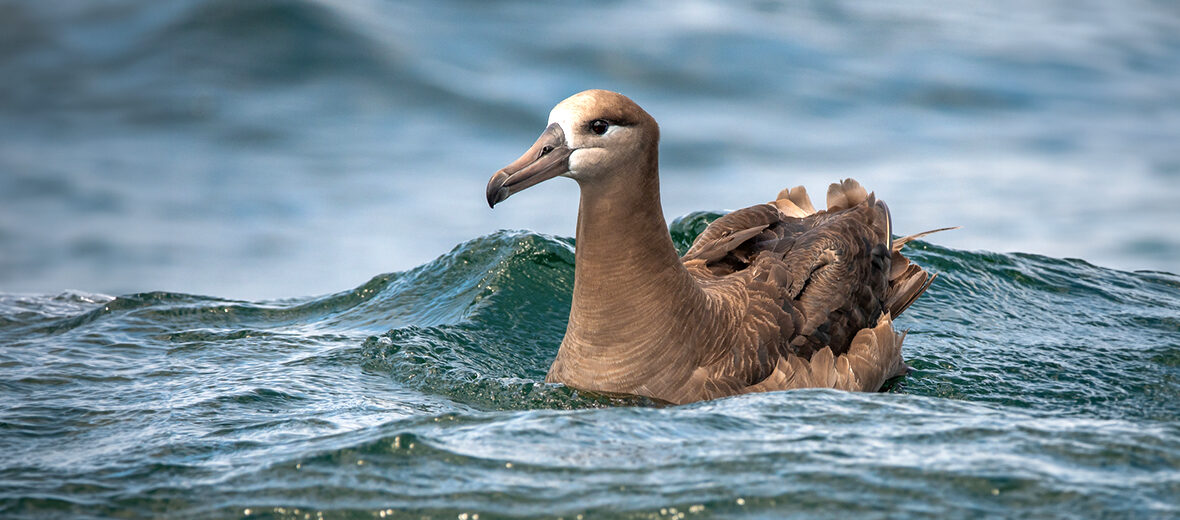
The black-footed albatross is just 1 of 3 albatross species that call the northern hemisphere their home. These birds are unlike other albatross species in that they are dark colored. Unfortunately, they face the threats of hunting; trapping; overfishing; pollution from multiple sources such as industrial waste, agricultural waste, and garbage produced by humans; volcanoes; and climate change which causes habitat alteration, storms, and flooding. They are listed as Near Threatened by the IUCN. However, their numbers are increasing.
First the Stats…
Scientific name: Phoebastria nigripes
Weight: Up to 7.5 lbs.
Length: Up to 33 inches
Wingspan: Up to 8 feet
Lifespan: Up to 50 years
Now on to the Facts!
1.) Their numbers are estimated at approximately 139,800 as of 2020.
2.) Pretty much all but 2.5% of their population is found along the Northwestern Hawaiian Islands.
3.) These birds have nasal passages which attach to the upper bill and are called naricorns. Also, their nostrils are located on the sides of their upper bill.
4.) Black-footed albatrosses generate a special stomach oil that is made up of wax esters and triglycerides and is stored in the proventriculus (narrow glandular first region of a bird’s stomach between the crop and the gizzard). This is utilized against predators and as an energy robust food source for chicks and for the adults during their long flights.
5.) They also have a salt gland which is located above the nasal passages that helps desalinate their bodies, due to the high amount of ocean water that they ingest.
But wait, there’s more on the black-footed albatross!
6.) The other 2 albatross species that inhabit the northern hemisphere are the Laysan albatross and the short-tailed albatross.
7.) They communicate via shrieks & squeals when fighting for food, and bill-clapping, groans, quacks, and whistles while they are courting.
Did you know…?
These albatross feed in the pelagic (open ocean) zone and take the eggs of flying fish, live fish, fish offal (fish waste), squid, and sometimes crustaceans.
8.) Black-footed albatrosses are monogamous (mate for life).
9.) Courting is a lengthy endeavor that lasts up to 7 years!
10.) After courting has completed, the mated pair will reproduce every 2 years.
But wait, there’s still more on the black-footed albatross!
11.) Females lay a single dull white egg with reddish brown spots.
12.) The egg is incubated for up to 65 days.
Did you know…?
They are vulnerable to oil pollution in the water, and also to the ingestion of floating plastics, which can fill their stomach and reduce the space available for food to be brought to their chick; and also cause impacting.
13.) Both parents participate in incubation duties. However, if 1 parent dies while at sea, it has been documented that the remaining parent will remain with the egg for up to 49 days without food or water, before leaving the egg to obtain nourishment.
14.) Fledging occurs in up to 140 days.
15.) Most deaths occur due to Taiwanese and Japanese fishing fleets killing the birds outright and/or the birds get caught in nets and drown.
Now a Short Black-Footed Albatross Video!
Be sure to share & comment below! Also, check out the Critter Science YouTube channel. Videos added regularly!
Want to suggest a critter for me to write about? Let me know here.
Some source material acquired from: Wikipedia & IUCN
Photo credit: iNaturalist




